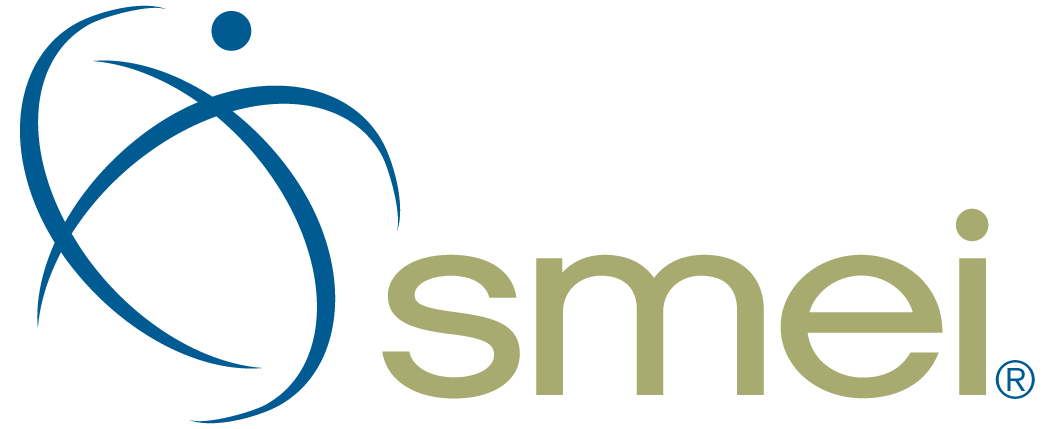Social Selling: The Ultimate Guide to Social Media Sales
Buyers are ready to make purchases on Social Media. Social Selling is the strategy you need to make it happen. Selling and buying have always been social activities.
People asked others for buying advice while chatting, way before our lives were taken over by the Internet. That is because the opinions of other consumers factor into our purchase decision. When social platforms initially came into prominence, marketing professionals quickly saw the value.
Before long, most organizations were busily broadcasting on social channels. Online reviews, social networks, and forums have replaced face-to-face chatter making all of us digital neighbors. Today, winning companies are increasingly using social media throughout the sales process. Social selling can help you sell more than the conventional sales style by connecting you with prospects on social media platforms where decision-makers can be found.
What is social selling
Social selling is a technique whereby salespeople identify potential prospects on social media platforms, build relationships and generate sales leads. It is the modern-day sales model. Social selling presents you as an expert with an additional suite of tools so that you can focus on the most productive parts of the sales process.
What is not social selling?
Social selling is not a one-and-done deal or a quick transactional activity. Neither is it about sending people with private and unsolicited messages or gaining access to contacts.
Social selling is about building relationships and waiting for the right moment to present yourself as a solution to their problem. The goal should be to address the prospect’s pressing need rather than becoming just another irritant to ignore. If social selling is done well, you should never be annoying your prospects. They should sincerely welcome your input and your valuable offer.
Old and new sales models
Sales have always been about providing the right solution at the right time to the right prospect through building relationships. Social selling is the same. The only difference is, while the old sales model was about sales demos, cold calling, and qualifying leads, social selling is about using social media networks to reach prospects, enlightening them on how the company can solve their problems, and nurturing them through information.
Social selling should be used alongside the existing sales prospecting techniques because it supercharges and supplements traditional sales. It also allows salespeople to ditch the practice of cold calling because the truth is that cold calling is becoming less and less effective. Here are 5 reasons to embrace social selling.
-
Social Selling Means Better sales pitches
Before the advent of social media, there was little to no hope of gaining the deep insight that it takes to tailor a sales pitch. However, today’s socially savvy marketer can dive much deeper and even have a clearer picture of whose input is critical in closing the sale.
With this information, the salesperson can show how their services and products directly solve the issues their customers are facing, even issues that customers have yet to identify themselves. That makes it a lot easier for them to build an insightful and emotive sales pitch.
-
Social Selling Enables social listening
Listening to the conversations of your customers using social tools is called social listening. It is about researching the conversations that your potential and current customers are having.
Social listening is used to understand a product or brand by analyzing remarks on social networks, forums, blogs, and other platforms. Done well, it can be very impactful, allowing you to better gauge buying signals and intent. Implement a social listening strategy.
Pay attention to what they’re posting. It allows you to find people who are talking about your industry, your competitors, or your business. To add value, start responding to what people are talking about your brand. Reach out with useful information. Like or comment if you read or appreciate the content. If you notice a contact needs help, jump in with a meaningful reply.
Although it may not directly promote your product it can help your contacts make their lives easier, thus strengthening your relationships. With prospects socially sharing information about their needs as well as wants on their public profiles, your communication with them can be relevant, helpful, and personalized, rather than cold or intrusive.
Such customer-centric strategies are on the rise and can offer you insights into issues you’d not spot by any other means.
-
Social Selling Expands existing network
Salespeople develop meaningful relationships with potential customers through social selling. It forms the foundation for business relationships.
The best results come when you make it your main goal to provide value. Before reaching out to any prospects, check out their following to see if you can find any mutual connections. And if you do, ask them for an introduction to new sales prospects through these shared connections. That way, social selling helps you maximize the benefits of existing connections and relationships to build an expanded network of customers who may want to hear from you.
When you have a robust network full of people who appreciate your value, it’s easier to connect with new prospects through your mutual connections. Such networking helps build trust.
-
Buyers use social media
Several studies point that buyers use social media as a crucial part of their research process. Just like sales professionals, potential clients are also leveraging social media and using social strategies to find potential vendors to develop an opinion about who the best fit is before contacting a salesperson.
In other words, your customers are actively looking for solutions on social networks by talking to their groups and performing searches. In the process, they’re telling you exactly what they want by sharing tons of information including their wants, needs, challenges, and goals. As a salesperson, that would allow you to create at least a partial picture of your prospect.
Now, when you reach out to prospects via email or phone, you should already have some knowledge of their pain points. The true winners are salespeople who are active on the same network as their potential customers.
-
Social Selling Provides Laser-targeted Message Opportunities
Watch for requests for recommendations, which provide chances for you to provide the solution. Customize your tactics based on the information people share on their social media profiles.
Put simply, your messages must be tailored to a specific prospect and never feel like a cold call. They should feel like they can trust you. Thereafter your engagement with them can be personalized. That way, they would already know who you are. Such an engagement is more likely to be seen as helpful and informed rather than annoying or pushy.
Social selling best practices
If you’re not using social selling as part of your strategy, you’re potentially losing a lot of sales. But even if you are using social selling, to effectively implement it, you need to engage your prospects. That means building relationships with the leads and waiting for the right moment to communicate so that you can present your expertise with a solution.
Here are 4 social selling best practices.
Social selling best practice 1: Show up
Automated liking, social bots, and commenting tools do nothing to build rapport. On the other hand, they can do damage to your professional and personal brand.
Nothing beats a live, real human. Remember, social selling aims to build contacts and make yourself seem more human, not less. So, show up digitally. Be sure to optimize your digital profiles across all networks to maximize your impact. Look at your profiles from a customer’s or prospect’s point of view. Your profiles should have a consistent message and tone across all networks.
Eventually, your online profile can show up when prospects and customers are looking for expertise in your field, so they start to acknowledge you as a subject leader.
Social selling best practice 2: Provide value
Provide valuable insight to the right customer at the right time. Offering advice as well as sharing content and information on social media benefits your audience.
They understand that you have valuable information to share, which makes them more inclined to listen to you. They notice your involvement in conversations with people in their network, thereby positioning you as an authoritative, useful, and relevant thought leader.
Although becoming a thought leader needs more effort than simply publishing a bunch of posts, it can help you network effectively.
Social selling best practice 3: Avoid the sales pitch
When customers see your job title, they get defensive, fearing a sales pitch or invasive questions. So, make sure you don’t get too pitchy when interacting with customers and prospects through social networks.
Although it’s okay to mention your service or product in some of your posts, don’t make them look like presentations or sales pitches. Rather than extolling the value of your service or product, your goal should be to provide valuable information.
Social selling best practice 4: Share posts from others
Share relevant posts from others. When sharing others’ content, add a short comment about how the knowledge can be applied. Your goal in social selling should not be to make a sale at the 1st point of contact but to establish relationships that will eventually close a sale.
Once you’ve demonstrated that you’re a real expert in your field and enhance your brand, not just a salesperson, customers will be happier to engage with you.
Social selling platforms
The growth of social media has been a huge factor in the mass adoption of social selling. Salespeople use social media to find and engage with new prospects. These customers are always posting comments on forums and discussing their needs online.
If you pay attention to this online chatter of your potential prospects, you can be in a better position to understand individual customer needs and market trends.
Choose the relevant social network
The time of a sales rep is precious. But there are a lot of helpful social platforms out there that can help you save a considerable amount of time.
Be careful not to get caught up in the next new shiny social network tool. Salespeople use different platforms in social selling in various ways depending on the businesses they are in. It’s why B2B salespeople generate leads from LinkedIn and fashion reps excel on Pinterest. Social channels are the main territory salespeople use to find, understand, nurture, and connect with prospects.
These platforms can offer insight into what they are discussing online so that you can step in to provide targeted and perfectly timed advice. Here is some guidance for getting started on social selling on Twitter, Facebook, and LinkedIn.
Social Selling Twitter
As a social network, Twitter can be a useful weapon in a salesperson’s arsenal. It is great for social listening because you can create lists to find content and monitor conversations from specific clusters of people. Search for a keyword and scroll through the feed.
-
Followerwonk
To follow the right users on Twitter, use the Followerwonk tool. It allows you to search Twitter user profiles by keyword or topic and provides you with a top-rated Twitter user list. Followerwonk also allows you to follow multiple users quickly rather than going through the time-consuming process of requesting each of them to follow.
Or you can export and filter through the list of users to more relevant profiles. Use this list to keep tabs on your existing contacts and watch for opportunities to like or reply to their tweets so that you can be on their radar.
-
Interact
Start interacting with users simply by liking or retweeting their posts, or by responding to questions they ask. Look out for comments or statements of pain points or requests for help where you can respond with a helpful remark and engage where appropriate.
However, refrain from overdoing it and be sure that your interactions with them are meaningful. Only comment when it adds real value and only like tweets that you like. Don’t just like for the sake of it.
-
Public and private list
Make the Twitter list public so that the leads can get a sense of what businesses you’re serving. When you identify new prospects, look out for their Twitter account, and include them in a private list. But don’t let the customers know that you’ve spotted them as prospects until the time is right to reach out to them.
Keep an eye on this list but do not share it with competitors. That way your competitors wouldn’t know who you’re targeting. When you start interacting with your prospects, don’t do so with the same kind of familiarity as you do with your existing customers because you don’t yet have a relationship with them.
Social Selling Facebook
Sending friend requests on Facebook to prospects or business contacts may come across as creepy. So, on Facebook, you must be careful when social selling. Some people don’t want to mix pleasure and business on Facebook.
Instead, create a Facebook business page. Then use social selling strategies. That way, it’s easy to share, comment, and like. As your professional network expands, other businesses will like and share your content in return. Always reply to follower posts.
Engage with Social Selling
Try asking something to spark conversation among your Facebook followers. Such posts get more comments than regular posts. That allows you to interact directly with followers. You could also ask them about some of their most vexing problems, then create a whitepaper, report, or even just a post to address their concerns.
You can then include how your service or product can help. Providing valuable content and thoughtful comments can put your page in front of new audiences.
Social Selling LinkedIn
LinkedIn is a professional network for engaging in social selling especially in the B2B arena. At least half of B2B buyers scour for product information on LinkedIn and use it as a source for making buying decisions.
In short, LinkedIn should be your platform of choice if you have only a limited bandwidth for social selling. Look out for mutual connections with whom you have solid relationships who can provide you with referrals, recommendations, and endorsements. It can give you instant credibility with new connections. Narrate how you’ve helped previous clients achieve their goals.
Groups
The biggest advantage of LinkedIn lies within its groups. Grow your network by joining relevant LinkedIn groups. Search for a group that is relevant to your expertise or identify potential connections who might need your product.
Choose from LinkedIn’s tailored suggestions or use the search functionality found at the top of the homepage when you log in, enter the category that matches your ideal customer, and then click on the search button. LinkedIn will then notify you each time a new account matches that profile.
Once you join a LinkedIn group, start networking with prospects and peers. When they view your profile on LinkedIn, send them a connection request to strike up a conversation. This gives you a chance to demonstrate your expertise.
Beat the competition with Social Selling
In sales, getting the edge over your competition can make or break the deal. It can be the difference between a crushing disappointment and a monumental contract. Social tools such as Twitter, Facebook, and LinkedIn can provide advance notice of any shifts in competitor positioning. They can help you gauge what your competitors are saying and the responses of the customers letting you spot competitive movement in good time.
Embrace social selling
Social selling works. It has already been here for years. It isn’t the next big shiny sales tool. The more time you put into it, the more effective it becomes. People who have been actively using social selling tactics and strategies with full commitment can vouch for the fact that social selling works. Top sales performers say that social platforms are an essential part of their sales strategy that plays a crucial role in closing deals. If most sales performers are using social selling, you must be on the bandwagon too. However, rather than offering advice and a solution, many salespeople instead still fall into the cold calling habit of spamming people with hard sales pitches. If you have not embraced social selling, the sales of your business are quite simply not what they ought to be. If you are not already there, it is high time you embrace social selling tools to craft personalized pitches and find new customers. If you’re not engaged in such a social purchase funnel, that can potentially be a lot of missed sales. You can choose to embrace it and watch your business grow or ignore it at the peril of losing business to socially savvy peers.
Photo by Rodion Kutsaev on Unsplash




